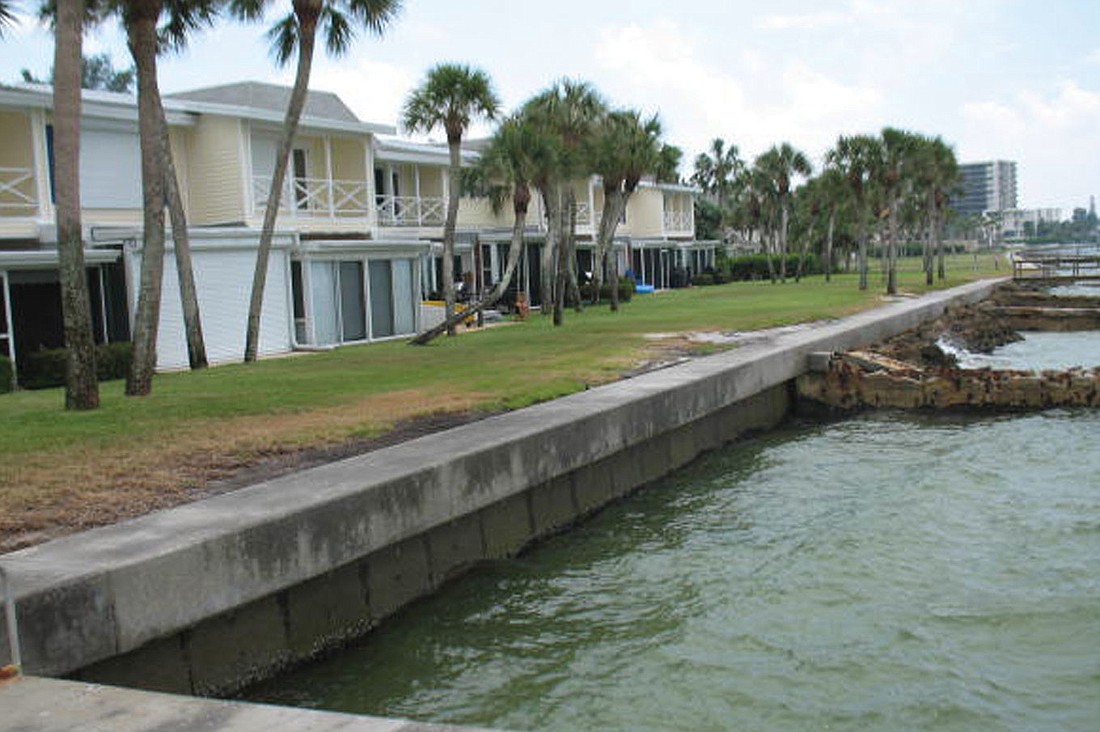- April 16, 2024
-
-
Loading

Loading

Twenty years ago, residents of Siesta Town House wanted a private place to swim in the Gulf of Mexico.
State agencies and the county issued permits for the erosion-mitigation technique, called rip-wrap, in 1992, but residents elected to leave a section included in the permit open as a swimming area.
This summer, tropical storms caused the Gulf to spill onto porches.
Shortly after that, and after one resident had to put sand bags in front of her sliding-glass doors, Sarasota County commissioners rejected a plea from Siesta Town House Association President Roger Sandt to pay for the permitting required to put rocks in front of an unprotected seawall at the property.
Sandt followed the rejection by hiring the Tignor Group P.A. to represent his case for a coastal setback variance, which cost Sandt $3,000 and county staff time to complete.
County commissioners unanimously approved the setback Dec. 5.
“This is kind of a new one for me,” said Sarasota County environmental specialist Chance Steed. “The current in the pass there is very strong. It’s not a very safe place to be swimming.”
The small stretch of beach that fronted the swimming area has since eroded.
“The L-shape in the seawall makes the waves splash up a little bit more,” Steed said.
State agencies and the county is careful with shoreline hardening, including placement of boulders, because they can negatively affect the ecology and biology of a body of water. The sandy bottom on which Sandt will place the revetment could serve as a place for seagrass to grow in the future.
“You could make the argument that they’re covering up a natural area with rock and taking away a public place from swimmers,” Steed said.
But, revetments can enhance the environment, he said.
“You could also make the argument that the rock will be colonized by all kinds of marine organisms and become a habitat of its own,” Steed said.
“Although we take revetments and hardening very seriously, this one seemed sort of odd that they had to come before us,” said County Commissioner Nora Patterson. “I think staff had no choice, based on my conversations with them, and this one does seem like a no-brainer for us to approve.”